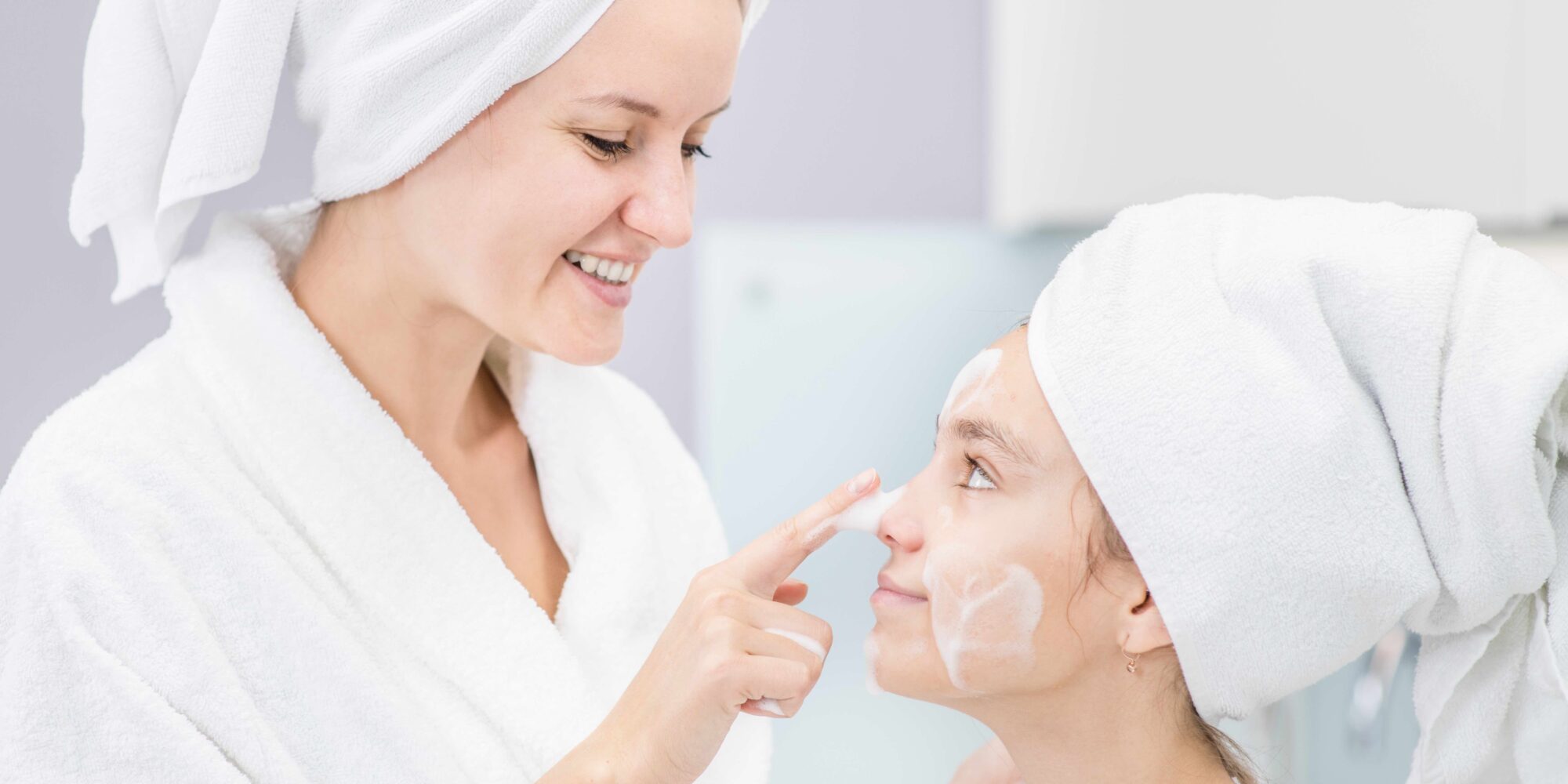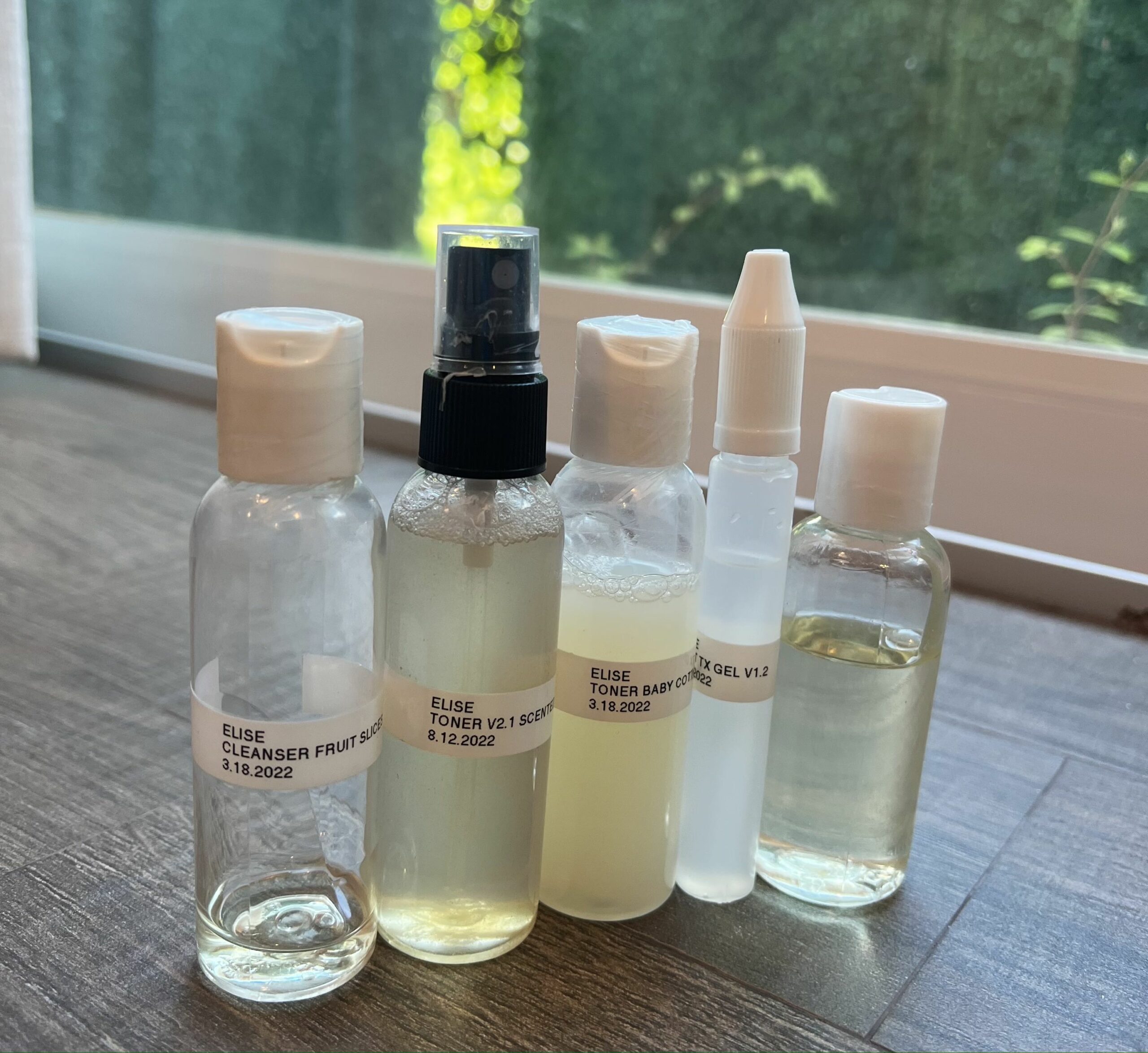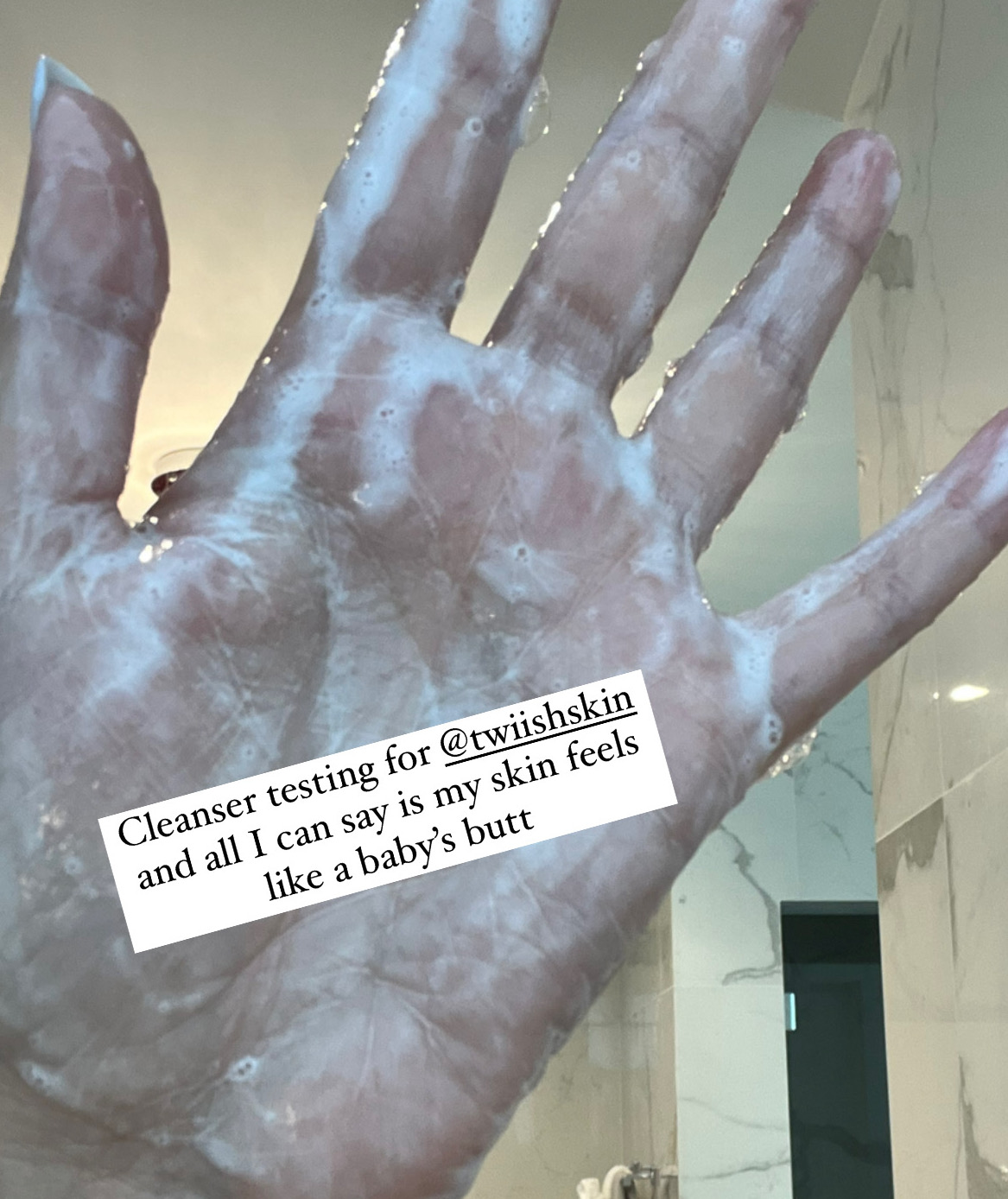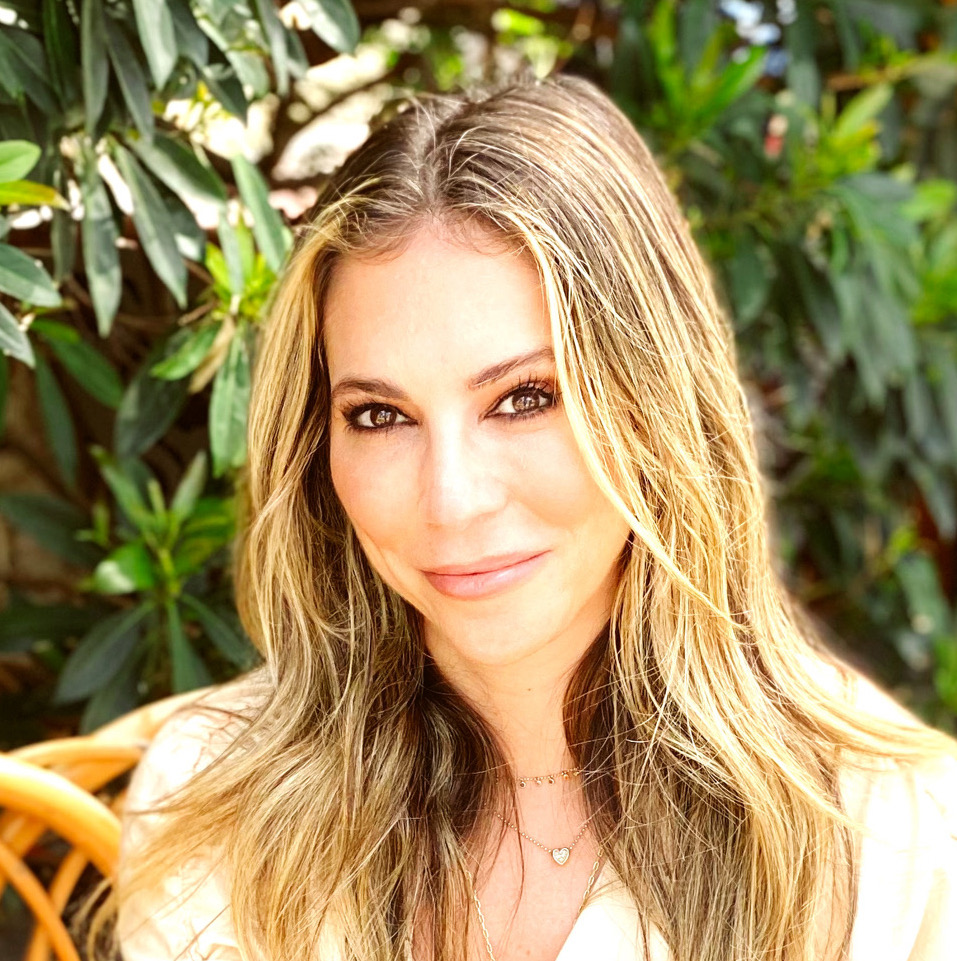
11 Lessons From Elise Minton Tabin’s Beauty Journalism And Marketing Career Informing Her Forthcoming Brand
If you had asked me a decade ago where my career would be today, the words “starting a skincare line for teenagers” would’ve never come out of my mouth. In my early 30s, I had a budding career as a beauty editor, a job many women clamor for. I quickly advanced from an editorial assistant to the executive beauty editor of NewBeauty magazine, my dream position.
But nothing lasts forever, and after 13 years of writing, editing and producing a hefty magazine (in every sense), changes within the publishing industry forced me to pivot. I made the leap to Hush & Hush. For two years at the beauty supplement startup, I worked on influencer marketing, content creation, blogs, public relations, branding, product development, sales pitches and retail strategy. There wasn’t a piece of the business I didn’t touch.
The pandemic hit shortly after Hush & Hush got up and running. Months and months at home were stressful, and my then 11-year-old daughter was experiencing her first breakouts. I was confident she and I would find products in my beauty closet to help. Unfortunately, everything was chock-full of anti-aging or other ingredients inappropriate for a teenager with blemish-prone sensitive skin.
And she didn’t want to have anything to do with my products. They sat untouched on her bathroom counter. When I asked her about the perfectly intact bottles and tubes, she grumbled, “They’re not cool, they smell weird, and they are your products, mom.”
At a loss, I asked my aesthetician for product recommendations. She had nothing to suggest. I asked beauty buyers for recommendations. They told me to opt for clean products. We went shopping and walked out empty-handed. If we were facing this problem, I knew we couldn’t be alone. That’s when I had an a-ha moment, and my forthcoming brand Twiish was born.
Having an idea for a new brand or product is just the first step. It’s been a long process—close to two years—to bring Twiish to life, and it’s still in the pre-launch phase. From my career in the media and beauty industry, I’ve learned a lot about building and launching brands that’s informing Twiish, but you don’t need to have a longstanding career to have a winner on your hands. Take cues from the learnings guiding my process. Below, I’ve outlined 11 of them.
1. Distinguish between BS and good products.
Any beauty editor will tell you that their BS detector is always on. I write on a freelance basis, and publicists pitch me hundreds of products per month. I’m constantly rebuffing pitches on products that don’t deliver. You discover what resonates with readers when you operate with integrity by giving honest, usable feedback about products. As incredible as some products may sound, many are merely hype.
Years of product testing leads to editors grasping how products should perform. We get schooled on super precise details like the way buffered glycolic acid feels on the skin, typical results from retinol usage, and the appearance of invisible dry shampoo upon application.
Teenagers are inundated with skincare content, but their BS meter isn’t in peak mode, and it can be hard for them to differentiate between brilliant marketing and a truly effective product. That’s where Twiish is filling a gap. We’re going to be educating the younger generation on ingredients, healthy habits and realistic expectations. If we can get them to turn on their BS meter and think like a beauty editor, they’ll be more inclined to purchase products right for them.

2. Attention-grabbing packaging is important, but formula efficacy reigns supreme.
Within the first few seconds of a customer discovering a brand, the packaging can make or break the purchasing decision. Unique and creative packaging is vital, but it’s not the only thing that matters. What’s inside the aesthetically pleasing and expertly designed tube is equally as important, if not more so, than how it looks.
I can’t even begin to tell you how many times I slathered my skin in an incredible-looking product that does nothing for it. Or, worse yet, it makes me break out, become red, sting or cause other adverse reactions. If your product is superficially gorgeous, but doesn’t deliver tangible results, it’s hard to have longevity. I’ve always been a champion of formulations that do what they say they do, even if the packaging isn’t the most exciting.
With Twiish, I’m working on creating appealing packaging and branding that speaks to teenagers. I’m spending equal amounts of time and money fine-tuning the formulations and primary packaging so they’re both the absolute best they can be.
3. The idea of a 9 to 5 doesn’t exist when you’re a solopreneur.
Editorial positions have a lot of rewards and a lot of responsibilities. I put countless hours into my job. Call me crazy, but I wouldn’t change that for a minute. I got so much out of it.
My work ethic spills over to my brand. I know what goes into creating a brand. I’ve lost track of how many hours I pour into it each week. I’m pulling all-nighters (not the easiest thing to do at 43) to tweak details until they’re perfect. There are days I want to give up, and I break down and cry, but, rather than quitting, I step back and remember why I’m doing it. Then, I make myself another iced coffee and dive back in.
4. It’s about building a brand, not releasing a stream of products.
Consumers want to connect with brands just like readers want to connect with a story. Once you tap into someone’s needs and forge a connection with them, they’re more likely to become a follower. Sharing an aligned vision and values with your customer stokes brand loyalty. It’s not about simply having a stream of products.
How do you build a brand with meaning instead of it just being an arsenal of products? It starts with engagement. Treat your customers like friends. Respond to their Instagram comments, invite them to events, send them handwritten thank you notes, tag them and repost their content. That interaction instigates a sense of community and makes your customers feel part of your brand.
5. Prepare to answer complex questions.
Once an editor, always an editor. In business meetings, I often prod people with questions that make them scratch their heads. I’m not trying to stump them, it’s how my brain works after conducting countless interviews. Editors strive to understand everything about a brand—its products, formulations, mission and beyond—and customers do as well.
It’s crucial to know everything about your brand in order to answer hard questions. Having answers to every conceivable question that might be asked places you, as a founder, at an advantage because no stone has been left unturned. The best way to ensure you have all your bases covered is to create a running list of questions.
There may be questions friends or family have or questions you’ve wanted other brands to answer. Answer the questions on the list as comprehensively as possible and hold onto the document. That way, when a hard question arises, you’ll be armed with a complete and accurate answer.
6. Set deadlines and try your best to stick to them, but don’t get discouraged by delays.
Editorial work has stressful deadlines that chain you to your computer. Building and running a beauty brand isn’t that far off. The difference between the two is that your head is on the chopping block when you’re up against a deadline to get a story done, and you don’t meet that deadline.
When you’re a brand owner, you rely on others (staff members, if you have them, or typically contractors) to execute a project. Meeting deadlines can be out of your control. Patience is definitely a virtue because nothing moves as fast as you’d like. Give yourself plenty of buffer in your calendar to adjust as necessary.
Clear communication is essential. I provide my vendors and freelancers with a hard deadline. I tend to push it up by few days or weeks to leave room for hiccups, and a reliable team is critical.
7. Research, research, research.
Before I decided to move forward with Twiish, I did a ton of research. In addition to researching your idea, category and brand name, it’s imperative to research the people you’re working with. I would never quote dermatologists without the proper board certifications or makeup artists claiming to have a celebrity client roster without anything to show for it in their portfolios.
Not doing thorough research can have huge consequences. For some reason, I didn’t thoroughly check the first lab I contracted, and I got burned financially, not to mention majorly delayed.
Prior to finding my current lab, I commissioned a cosmetic chemist to assist with my formulations. I hired her blindly off a website that’s like Tinder for cosmetic chemists with no recommendations or referrals. She said she had worked for brands sold at Sephora, although I’m not sure if that’s true or not.
When I finally received samples and investigated the formulations, they were full of ingredients I was against using. It was stupid of me to commission her, and my mistake cost me $7,500. Lesson learned: I now only work with vendors I am familiar with, have worked with in the past or are referred to me by someone I trust. Before hiring anyone, I research them until I can’t anymore.
8. Play to your strengths and outsource the rest.
Running a one-person business is challenging. When you break it down to what typically would be a salaried employee’s job responsibility, it becomes a little easier to digest. I outsource responsibilities outside my wheelhouse like branding and website development to a small agency or freelancer. I work with a consultant (Aggie Burnett, the best in the business) on big-picture strategy, messages and product ideas.
I don’t feel obligated to tackle everything at once. Accomplishing small actionable items is easier than attempting to accomplish everything. Make a list of what you can delegate to others and focus on tasks in your wheelhouse.

9. Don’t be scared to tease your brand or launch in advance.
Print and digital publications work on schedules set weeks to months in advance, so the more you can get the word out about your brand and products before they hit the shelves, the better. As an editor, the brands that get my attention before they launch allow me the runway to craft a meaningful story.
You’d be surprised what a lunch meeting or 20-minute Zoom session can net. It may be a full-page founder story or prime real estate in a product roundup. While editors know what’s down the pike for coverage, they constantly need to source products, ingredients, experts and more for articles. That’s why hinting at what’s to come is a good idea.
On social media, I’m trickling out what I’m working on, and I’m starting conversations with influencers, buyers and editors. I’m surprised by the responses from my colleagues, followers and even strangers who message me telling me to keep them up to date on the launch because they want to cover it or purchase the products. I’m creating a network of brand evangelists willing to take a chance on Twiish early on, which feels incredible!
10. Creating copy and taglines is like writing an article.
The first thing I do when I write an article is create an outline. After I create the outline, I carve it up into multiple sections, each with a headline and bullet points indicating how the body copy will take shape. The article has to address the five Ws (who, what, where, when and why) and supply context to support the thesis.
I handle writing social media captions, website copy and product descriptions similarly. An extensive feature has a headline, body copy, sidebars and photography. The copy and taglines for a brand follows the same course. The difference is that brand copywriting is more concise and has a component of soft selling to it. Beauty journalism presents the facts, delves into the debate and relies on credible sources for information.
Clickbait isn’t only for digital media outlets. We’re all guilty of opening a promotional email because the headline is that catchy. If you enjoy writing, I highly recommend harnessing that skill.
11. Stand your ground on must-haves.
Twiish’s formulations are custom crafted and expensive. I didn’t want a customer to pick up a product from the brand that reminds them of a product from another brand. I considered private label, but I’m out to incorporate a host of ingredients in my formulations to make them super effective.
I’ve spent years picking leading beauty industry brains about ingredients. I would be remiss not to use my knowledge to improve the formulations. The hero ingredients are the secret sauce for healthy, clean teen skin, and they’re costly, but I won’t compromise on them.
I considered alternative production solutions to save money. I spoke with a fellow brand founder who suggested I produce and pack my products at home. For some brands, that’s feasible. For me, it would be an unsurmountable amount of stress. Plus, my husband prefers I don’t burn down the house since I have no clue about mixing ingredients. So, it’s a hard pass.
I opted to partner with a manufacturer that runs small quantities, but I can scale Twiish with. That was nonnegotiable. I need to prove the concept before plunking down for a large quantity. For the primary packaging, I searched for months to identify a partner offering a quantity I could swing while achieving the cool factor integral to Twiish. Next year, the brand will launch, and teens around the country, including the one that inspired it, will determine if I hit the mark.





Leave a Reply
You must be logged in to post a comment.